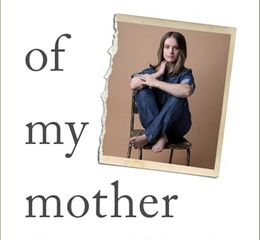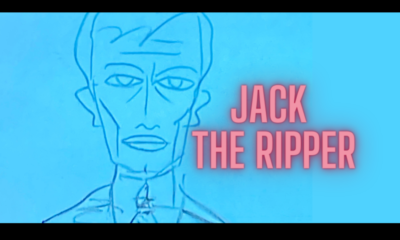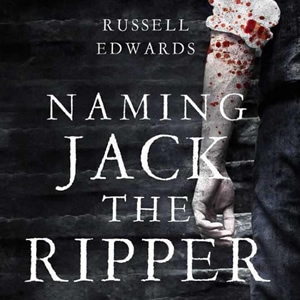
True Crime Studies: Naming Jack the Ripper by Russell Edwards
More Videos
Published
4 years agoon
By
Rachel RothWho was Jack the Ripper? Was it Aaron Kosminski? George Chapman? Walter Sickert? Bigfoot? Spring-Heeled Jack? There is no shortage of theories about the identity of the infamous Whitechapel ripper, and no shortage of books written about it. Unfortunately, no amount of sleuthing will ever unveil the mask because the crimes happened 133 years ago, making it kind of hard to track down a, now, very dead serial killer.
Most true crime readers already have an idea who they believe Jack is though, as do the many authors who write about him. If you pick up enough of these “unmasking” books you’ll find a lot of them share one major flaw- the inability to bend, or rather, arrogance. These authors are so positive in their theories that they’ll refuse to listen to anyone that may offer a counterpoint. Russell Edwards of Naming Jack the Ripper is no different, and it’s the one dumbbell that weighs down his otherwise compelling analysis.

Jack the Ripper, also known as the Whitechapel Murderer, and sometimes The Leather Apron, was a serial killer who murdered and mutilated an estimated number of five women in the Whitechapel district of London in 1888. The first serial killer in history to be heavily followed and obsessed over by the media, Jack the Ripper may be gone but he continues to live on in folklore, pop culture, and in the minds of millions to this day. This man who murdered five women so horribly has made himself immortal by simply remaining a mystery.
Jack’s crime spree officially started on August 31, 1888, and ended 70 days later on November 8, 1888. Only a few months forever cemented in history. It’s not at all a surprise that Jack wasn’t caught as criminal investigations back then relied almost entirely on eyewitness statements. You either had to be caught in the act or seen by someone you knew in order to be properly identified, and the Ripper case had neither of those. There was also the issue that was 1800s police work, it wasn’t exactly that professional. Ironically, this is the only reason Naming Jack the Ripper even exists because back in the 1800s, it was apparently okay for policemen to take accessories off dead bodies and gift them to their wives as Police Constable Amos Simpson did on the morning of September 30, 1888, when he allegedly took a shawl from one of the Ripper’s victims.
(By the way, Amos Simpson’s wife did not appreciate this particular gift. She took one look at that thing and said, “are you nuts? Why would I want a dead woman’s bloody scarf?!” and made him put it in the closet. I don’t actually know what he did with it but point is, she didn’t want it, so fellas, don’t be cheap. Just buy your girl a scarf.)
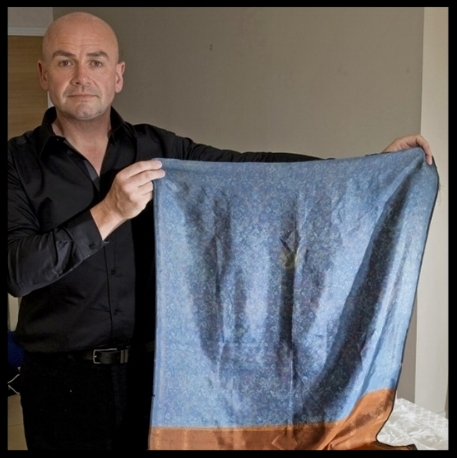
Naming Jack
Naming Jack the Ripper is not the best “unmasking” book out there, but it is one of the most convincing. That is something I will praise this book on, Russell Edwards is good at making you believe him.
Edwards is a Ripper fan down to his very core and he writes his “evidence” with a clear passion for the subject. You’re moved by his earnest desire to find Jack’s identity and he’s not too bad of an investigator either. Published in 2004, Naming Jack the Ripper started all from a rumor about a mysterious shawl that may or may not be a piece of evidence in one of the world’s most famous unsolved criminal cases of all time. It’s the Kentucky Fried Mouse of true crime circles.
Supposedly the shawl had belonged to Ripper victim Catherine Eddowes and that she’d been wearing it the night she was murdered. According to the story, it was removed from her body and then passed down through the family of Amos Simpson. Generations later, it was handed over to Scotland Yard’s Black Museum where it sat in a dark room until it was finally sold to Edwards at an auction.
Honestly, I’m surprised this shawl isn’t more famous. Whether or not it actually belonged to Eddowes, it’s still connected to a case so famous it has its own fandom. Despite being debunked by experts, the Ripper letters have continued to live on in importance, yet this simple shawl gets the cold shoulder.
An ominous piece of true crime history, the shawl’s shadowy presence among those who believe its story is only amplified by the dark reddish stains that defile it. If it actually did belong to Eddowes, and if she really was wearing it that night, and if those stains really are her bloodstains, then that makes the shawl the only existing piece of physical evidence regarding the Ripper case. Edwards had no doubt though. He runs hard with all these “what-ifs” and sets out to unmask the Ripper, and before the book even ends, he has his man.
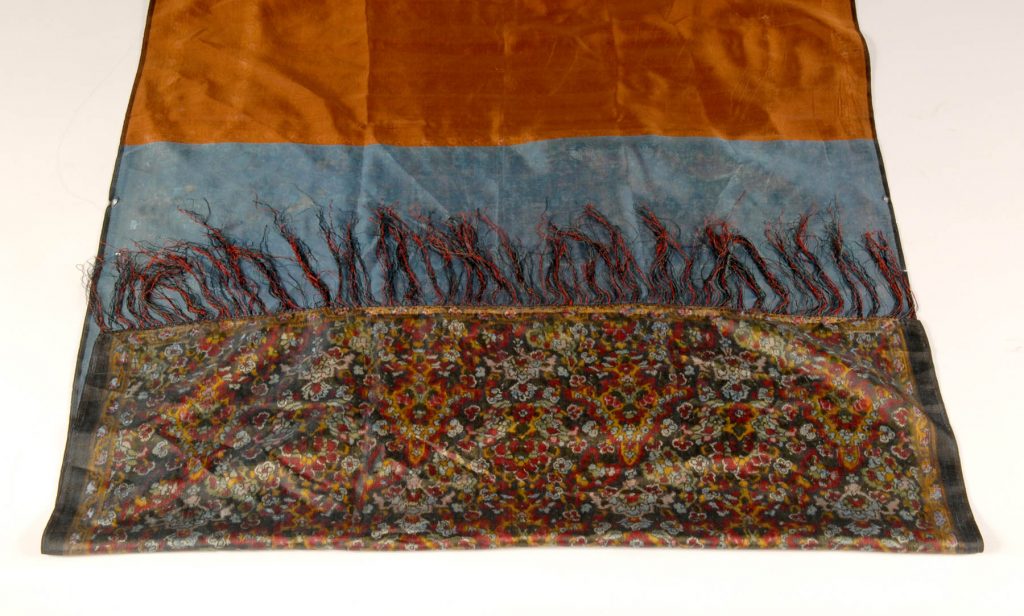
“He is no longer just a suspect. We can hold him, finally, to account for his terrible deeds. My search is over: Aaron Kosminski is Jack the Ripper.”
Russell Edwards, Naming Jack the Ripper
Naming Jack the Ripper goes into great detail about this mission that Edwards bestows on himself and I will say, it makes a compelling case. For one, Edwards has clearly done his research. He dives deep into the history of Jack and his victims, as well as the Whitechapel area, discussing the social issues of the time along with the economic struggles and how they possibly resulted in the birth of Jack. Even if you don’t agree with his final verdict, I suggest giving Edwards’ book a try for these sections alone. He lays out the case in a neat linear fashion and hands over every tiny detail that was available at that time.
Then comes the unraveling. He ties everything around the shawl. No matter how far he might steer away, he eventually goes back to Eddowes’s delicate fashion piece that’s older than everyone’s grandmother. It’s understandable why Edwards clings to it so desperately though, it is the whole basis for his case, and through it he offers something that most “unmasking” books do not have- DNA. This is of course, debatable, but using the shawl Edwards finds “proof” that it belonged to Eddowes and that Jack was a pervert as he apparently ejaculated on the fabric. Using these light traces of blood and sperm, Edwards matches the DNA to Aaron Kosminski who was a suspect back in 1888. The rest of the book then does what it can to connect the dots with Kosminski taking the shawl’s place as the book’s centerpiece.
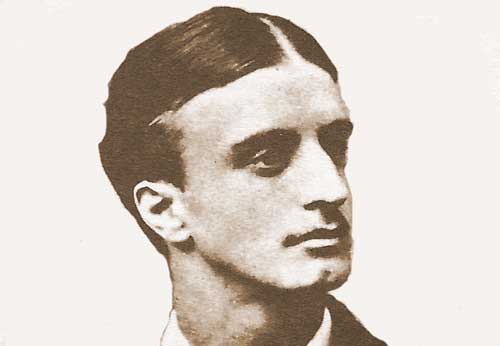
Verdict
I really liked this for its persuasive power and the historical details it offers, which is what a book like this is supposed to do. It’s meant to persuade you and Naming Jack the Ripper certainly does its best. However, the riveting journey of the shawl as it’s tested for DNA and connected to numerous persons in history becomes a slog when Edwards comes bouncing back into the picture with a big, non-subtle sign that might as well say “I’m a Hero!”
If anything lowers this book’s rating for me it’s how much Edwards insert himself in the story. Naming Jack the Ripper is 10% the case, 30% the shawl, and 60% Edwards talking about himself. It takes you out of the narrative, away from the shawl, and into the Edwards home office where you can see him making a Charlie Kelly “Pepe Silvia” type conspiracy chart with a picture of the shawl pinned at the center. It reminds me of Steve Hodel’s Black Daliha Avenger where everything is somehow framed to be about the author. Edwards even connects the streets of Whitechapel to himself by recounting the years he spent walking through them as a college student having a connection with the city.
If you can ignore all that, it’s a very good read. Whether you believe everything Edwards presents, it’s hard to ignore everything he offers which in my opinion, makes this book a successful, not to mention fun, endeavor.
 (3.5 / 5)
(3.5 / 5)
Related posts:
Rachel Roth is a writer who lives in South Florida. She has a degree in Writing Studies and a Certificate in Creative Writing, her work has appeared in several literary journals and anthologies. @WinterGreenRoth

Book Reviews
The Hotel: We’ll All Be There Soon.
Published
2 weeks agoon
March 17, 2025By
C M ReidDaisy Johnson’s, The Hotel is a collection of stories that tell the tale of a hotel built on cursed land. Originally written and recorded as a series for BBC Radio 4 in 2020, (you can find the recordings here https://www.bbc.co.uk/programmes/m000mrcg/episodes/player )
The fourteen-story collection was released in hardcover in 2021. Johnson’s prose is haunting, weaving together the stories of generations of families who have been tempted, forced, or serendipitously dumped at The Hotel. Most leave the message, “I’ll be there soon,” and many disappear from room 63.
- ‘The British literary heir to Stephen King’ Johanna Thomas-Corr, Sunday TimesA triumph of contemporary horror from the Booker Prize-shortlisted author, this collection of short stories will haunt you long after you turn the final pageA place of myths, rumours and secrets, The Hotel looms over the dark Fens, tall and grey in its Gothic splendour
- Built on cursed land, a history of violent death suffuses its very foundations –yet it has a magnetism that is impossible to ignore
- On entering The Hotel, different people react in different ways
Last update on 2025-03-17 / Affiliate links / Images from Amazon Product Advertising API
The Plot.
The Hotel tells the stories of the people who are drawn to The Hotel, or, more accurately, the ground the hotel is built on. The first story explains what we know about the hotel, its tendencies, moods, and … hobbies. We are then introduced to Mary Southgraves, ‘The Witch’, who comes to live with her husband on the land on which The Hotel will be built. The villagers in the pond drown her for predicting a sickness that takes the village children, (no this is not a spoiler she tells you she dies on the first page of her chapter.)
The proceeding chapters build upon this story. We meet the workers who are brought in to fill the pond to begin construction. A child of a guest in 1968 who meets another girl who may or may not actually be there. A maid who takes part in séances and Ouija board sessions. The stories progress through time into the present.
Highlights.
The haunting prose of The Hotel does the majority of the heavy lifting for this collection, which makes sense since it began as a podcast series. Johnson’s prose leans towards poetry, albeit more Poe than Keats.
The repetition of specific characters and family names throughout the different stories was intriguing, giving the stories links. These links trigger a sense of recognition for the reader. There is also a sense of anticipation, knowing what has happened to these families already, we wonder how much more they can withstand. The Hotel is like a curse following these families, but I think Johnson is commenting on lineage and the consequences of past actions. The sins of the father and all that.
- Fifteen highly original and darkly unsettling supernatural stories, performed by some of Britain’s finest actresses ‘This is what we know about The Hotel
- It is bigger on the inside than on the outside
- Do not go into Room 63
Last update on 2025-03-17 / Affiliate links / Images from Amazon Product Advertising API
Drawbacks.
These stories can get confusing at times and I think this is due to the briefness of the stories. It’s hard to keep track of a character that you have spent four pages with and remember them three stories later. I found myself having to stop and turn back to check if that person was who I thought they were. This pausing to turn back interrupts the reading experience. It pulls you out of the story and destroys the atmosphere that Johnson has worked to create.
The Final Take.
The Hotel was an interesting read. Johnson is a talented writer who has published a collection of linked stories that will keep the reader turning pages if only to find out the final fate of these families. That being said, it is obvious that the stories were initially written for a podcast. I’m not sure if it’s the way they are put together or… I don’t know, there’s just something ‘podcasty’ about them. As such I would recommend listening to the audio episodes (see the link above) over reading the book.
 (3 / 5)
(3 / 5)
On Halloween in 2016 Josh Malerman, author of Bird Box, released A House At The Bottom Of A Lake (gosh this is a hefty title!). Last week, I picked this slim book up off my library’s Adult Horror shelves, not knowing what to expect. What I got was a novella that should have been shelved in the teen lit section. Perhaps it is the rather weird underwater sex scene that precludes it from those shelves.
- From the New York Times bestselling author of Bird Box and Malorie comes a haunting tale of love and mystery, as the date of a lifetime becomes a maddening exploration of the depths of the heart
- “Malerman expertly conjures a fairy tale nostalgia of first love, and we follow along, all too willingly, ignoring the warning signs even as the fear takes hold
- ”—Lit Reactor The story begins: young lovers, anxious to connect, agree to a first date, thinking outside of the box
Last update on 2025-03-10 / Affiliate links / Images from Amazon Product Advertising API
The Plot.
When James asks Amelia out on a date during summer break, canoeing was the last thing that she expected. Borrowing his uncles canoe, James hopes he can show Amelia an exciting time, because he really likes this girl! The date starts well and the conversation, if stilted at times, is banter-ey and cool.
They head out on the first lake, but James has an idea that they might have a better time on the lake that joins to this one. It is quieter, no speed boats to show him up, they’ll be able to eat their picnic lunch in peace and quiet. When they arrive, though, they notice a tunnel, that may lead to a third lake. Eager to show Amelia that he is an exciting kind of guy, James heads through the tunnel.
Lo and behold, it is another lake! Albeit, a bit murky and deserted, but that’s alright. That is until they notice that beneath the bow of the boat is a tiled roof. Beneath that tiled roof is a whole house. What ensues is a summer of falling in love and exploring a sunken house that may not be as empty as they thought.
Highlights.
Malerman writing the internal monologue of an angsty seventeen-year-old on a first date is one of the most authentic things I’ve read for a long time. Even down to James worrying about revealing that his dad owns the hardware shop he works in. Scared that Amelia will think that is all he is going to do with his life.
The ending (which of course I cannot discuss here) was well done, although a little contrived and predictable. It felt as if it had been almost tacked on the end as an afterthought. Perhaps Malerman finished the story without the final chapter, but was encouraged to add that last bit to give readers some closure
- “A book that demands to be read in a single sitting, and through the cracks between one’s fingers
- There has never been a horror story quite like this
- Josh Malerman truly delivers
Last update on 2025-03-10 / Affiliate links / Images from Amazon Product Advertising API
Drawbacks.
Malerman is a good writer, we have seen this in the many novels he has released since Bird Box. A House At The Bottom Of A Lake did not meet the usual standard. There are many reasons I say this. The first is a lack of creativity in descriptive passages in this book. They all felt pretty drab and began to become repetitive by the end of the story. I don’t know how many, times Malerman compared the way that James and Amelia were moving under the water in their scuba suits as ‘Astronaut-like’ or ‘Astronaut-esque’ or ‘ Like he was walking without gravity’, but really can you find another comparison please because this one is all used up!
As I mentioned in the intro, this did feel like a YA novel. Not only because both of the main characters are seventeen, but the prose is a too simple to be engaging. A House A The Bottom Of A Lake might be marketed differently in Australia (where this humble reviewer lives), perhaps making it to the YA shelves in the US or UK, but this is definitely not adult horror.
The Final Take.
Josh Malerman is a favorite of mine. I tend to pick up his books, blurb unread, because I will generally enjoy what he is putting out there. The exception to this rule is A House At The Bottom Of A Lake (if I never have to type that title again I will be pleased!). It just didn’t hit the way his other novels have and I was disappointed.
 (2 / 5)
(2 / 5)
Imagine this. You’re home alone, waiting for your partner to return, when you hear a knock on your door. You answer it to see a family of five, bundled up against the cold. The father, a kindly older gentleman, explains that he used to live in this house as a boy. And he would love to show it to his family.
Do not let them in.
The story
Released in June 2024, We Used To Live Here is author Marcus Kliewer’s debut novel. It tells the story of Eve, who just purchased a beautiful house with her partner, Charlie. Their plan is to flip the house and sell it.
One night, while waiting for Charlie to come home, Eve is surprised by a knock at the door. It’s a man named Thomas Faust and his family.
Thomas explains that he grew up in the house and hasn’t been in the area in years. Would Eve let them in so that he can show the home to his children?
Against her better judgment, Eve lets them in. She regrets this almost at once when Thomas’s daughter vanishes somewhere into the house.
What worked
I always appreciate a book that allows you to play along with the mystery. And this book does that better than just about any other I’ve seen.
Pay close attention to the chapters, to the words that aren’t there. To everything about this novel.
This is mostly down to Kliewer. This is ultimately his work of art. But the production value is also fantastic. I don’t want to ruin the multiple mysteries, so I’ll just say this. There are clues in this book that require some specific artistic choices in the page layouts in this book. And I loved that.
If you’d like to experience another horror book review, check out this one.
We Used To Live Here is also the kind of story that makes you question everything right along with the main character, Eve. Eve is a great main character. But she might be an unreliable narrator. She might be experiencing every single horror described, exactly as it’s described. Or, she might be having a psychotic breakdown. Through most of the book, we can’t be sure. And that is so much fun.
Finally, the weather plays a large part in this story. There are several stories in which the weather or the land itself could be considered a character. Even an antagonist. This is certainly one. The winter storm is the thing that traps the family in the house with Eve. It also makes escaping the home difficult. Reading this book during the winter was especially impactful. Most of us know what it feels like to be shut in by a storm. I’ve personally lived through some of those storms that are just referred to by their year, as though they were impactful enough to claim the whole 365 days for themself. And that was with people I liked. Imagine what it would feel like with strangers. It’s a staggering thought and one that we explore in depth in this book.
- Get Out meets Parasite in this eerily haunting debut and Reddit hit—soon to be a Netflix original movie starring Blake Lively—about two homeowners whose lives are turned upside down when the house’s previous residents unexpectedly visit
- As a young, queer couple who flip houses, Charlie and Eve can’t believe the killer deal they’ve just gotten on an old house in a picturesque neighborhood
- As they’re working in the house one day, there’s a knock on the door
Last update on 2025-03-08 / Affiliate links / Images from Amazon Product Advertising API
In the end, We Used To Live Here is a fantastic book. It’s the sort of story that sneaks into your brain and puts down roots. And if this is just the first book we’re getting from Kliewer, I can’t wait to see what else he comes up with.
 (5 / 5)
(5 / 5)

